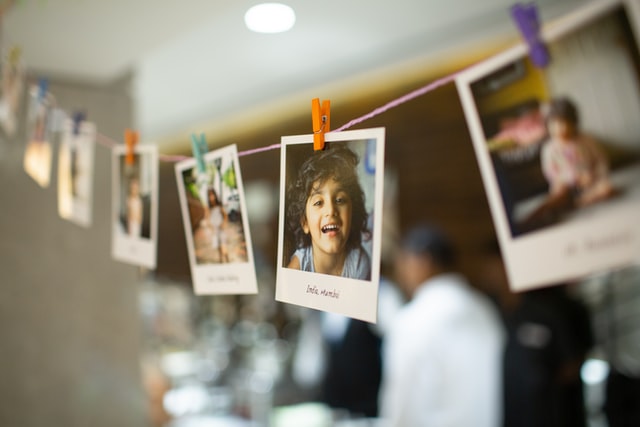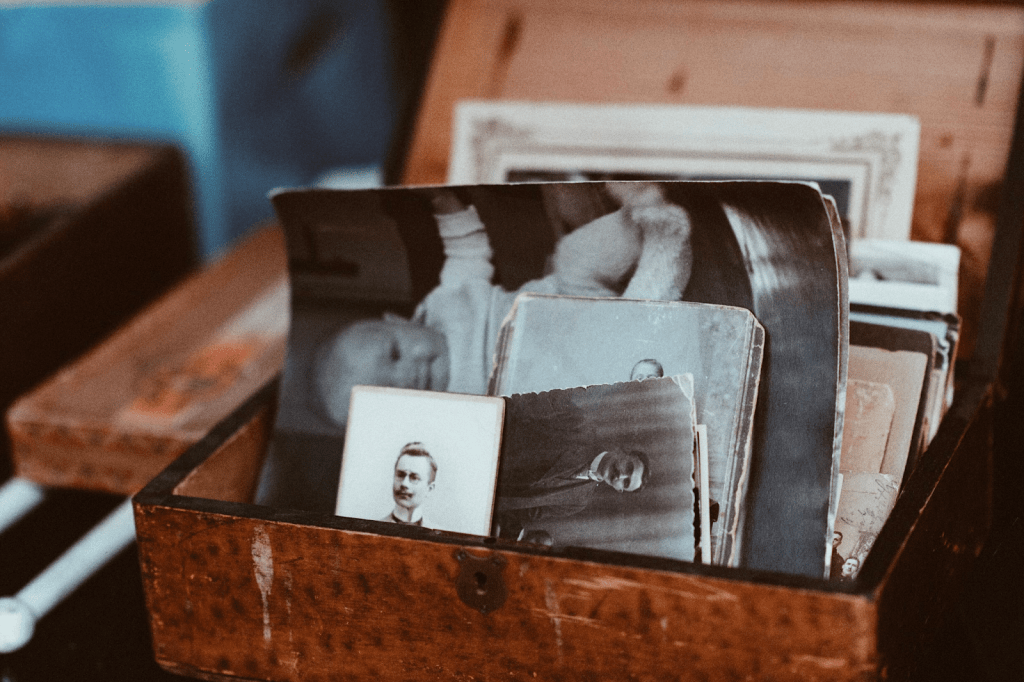From ancient cave paintings to modern digital video and audio technology, family members have cherished sharing stories and passing down family history. Every family has stories to tell its future generations, shared narratives passed down from ancestors that can give us context, insights, and a sense of our place in the world.
What is a family story?
Family stories are a great way to capture tales about family members and ancestors, their experiences, lives, and adventures. They also help us understand the past, make sense of our lives moving forward, and give our children a foundation to grow upon. For many, the COVID pandemic demonstrated the value of capturing, collecting, and sharing precious family memories and experiences that help us nurture bonds and more deeply appreciate loved ones, especially when we can’t be together in person.
If you find yourself in the role of family-story gatekeeper, the responsibility of passing down ancestral information and legacies to younger generations may seem a little daunting at first. However, never in the history of humankind has it been so easy to record, collect, preserve, and share these stories, even if you live far away or only see each other at holidays.
Whether you’re interested in creating a family time capsule, documenting the lives of elderly relatives, building out a family tree for your children, or simply keeping records for future generations and projects, there are excellent options available for recording, documenting, storing, and sharing. And you don’t have to be a professional film maker or storyteller to produce and present your family history in delightful ways.
Five Steps to Recording and Saving Priceless Family Stories
Here are a few helpful tips, strategies, and resources to help get you get started.
Step One
The first step in recording a family history is to think about what you want to get out of conversations with relatives, and the goals of your project. Ask yourself the following questions:
- Is there a particular era or event you’d like to cover?
- Are there family secrets you’d like to dig into a bit more?
- What would interest your children or other family members?
- How much do you already know that can help get interviewee talking?
- What additional research can you do to better understand the areas you’d like explore?
Step Two
Figure out the logistics. This means deciding who to interview, when, where, and how. If you can’t be together in person, use a video conferencing program like zoom, which many people of all generations have come to learn through the pandemic.
Remember that not everyone will be comfortable talking in front of a camera or even a smartphone, remote or not, so you might have to be flexible and just the microphone, perhaps switching to video later as your family member relaxes and opens up. Some people may do better with just a voice recording using a recording device to tape an oral history.
If your family member is a bit nervous or shy about being recorded, consider recording a couple of people together, such as grandparents, aunts and uncles, mothers and daughters. It could provide a beautiful, cherished recording, and help those being interviewed reminisce and tell a fuller story.
Step Three
Once you’ve set up a convenient time, prepare the scene. Here are some quick tips to ensure you have the right location:
- Ensure the spot is quiet—away from a busy road, no TV blaring in the background, or dogs barking.
- If possible, record indoors to avoid wind noise and environmental distractions.
- Try to use an interesting or cozy background, such as a bookshelf or hearth.
- Encourage the subject to sit in a comfortable chair and wear comfortable clothes so they feel more relaxed.
- If you’re videoing, ensure your interviewees are in the light and take advantage of the natural lighting in the room. You don’t need studio lighting—if necessary, an affordable ring light can help.
- Position the microphone between you and the person you’re interviewing so that both voices are captured and you know which questions are being answered.
Step Four
Prepare your interview questions well in advance and group them by theme or by year. Chances are your subject isn’t used to being interviewed and Q&A is certainly not part of your normal interactions, so it’s a good idea to have a few gentle warm up questions ready. Here are some great starter questions to help break the ice:
- What was one of the silliest things you ever did?
- What were your parents like?
- Has your life turned out differently than you thought it would, and if so, how?
- Tell me about the house/town you grew up in?
- What sorts of things did you do with your friends, before you were married?
- How did you and grandma/grandpa/Mom/Dad meet?
- Tell me about the biggest challenge you’ve faced in life, and how you overcome it?
Once you feel that you’re in the flow, you can move onto any specific questions on the topics you’d like to cover. Most of your questions should be open-ended, meaning they give the interviewee chance to expand on their answer, for instance:
- Tell me about …
- What was it like when …?
- What happened when …?
- How did you overcome …?
- How did that happen?
- What were you thinking then?
But have a few close-ended interview questions ready too, as they can help make the interview feel less one-sided and offer a change of pace. Close-ended questions are designed for yes/no or short targeted answers:
- Did you like that?
- Was it hot that day?
- Who gave you that?
- What did he say next?
Although the answer may be very short, these questions can also trigger memories and some of the answers might surprise you and lead to follow on topics.
Also don’t be surprised if a family member takes you down a totally different path than expected and your questions aren’t in the right order or relevant for the topic. You can always circle back round later and keep some very generic questions at hand, in case the detour topic turns out to be more exciting. Generic questions include:
- How did that make you feel?
- What did you do next?
- Who else saw/heard/experienced the same thing?
- Is there anything else you can remember about that?
- What did your mother/father/brother/sister do?
If you’re planning on asking about events that might be difficult or uncomfortable for the family member to discuss, take it slowly, and give them the option not to answer. At the same time, don’t try to fill any awkward silences. The interviewee may be accessing tough memories or thinking about people they hadn’t thought about in a long while. Let the silence rest until they’re ready. It could be worth it.
Step Five
Once you’ve completed the recording, you’re ready to think about any edits to make or other special effects to add. There are many easy-to-use apps and software packages that let you crop and enhance videos, add soundtracks, photos, captions, and other effects. These can make your videos more interesting and a great way to use other types of content. Many of these apps don’t require special training and often members of the younger generation are already well versed in using them.
In many cases, you’ll want to store the raw footage or use it later on for future family history projects. Obtaining a transcription for a written version of the story is also easy, and affordable if not free online. A transcript makes it easy to turn memories and experiences into a memoir or part of another project.
Also, begin to pull together photos, documents, and other materials that support and expand on the stories you’re telling. Digitize old home movies, tapes, and photographs so that they don’t fade or degrade over time.
Collect, Store, and Share with Kinscape
Once you’ve captured the recording, videos, photos, and any other documents, Kinscape offers excellent features to make it easy to collect, share, and store these precious memories. Not only do the features in Kinscape include rich social networking capabilities, but you remain 100% in control of your content, and it’s kept totally private, Kinscape’s ad-free platform means you have no fear of seeing ads or click bait related to Great Uncle Henry’s whisky drinking or Aunt Sarah’s fifth divorce.
Here’s a quick glance at some of the features you can use for your family story projects:
- Communities: Kinscape lets you build a community or communities specifically for sharing your content with your family, while enabling you to participate or create other communities for different aspects of your life. Creating a community is simple and is the perfect place to share photos, videos, stories, and much more, safely and without fear of prying eyes.
- Stories: The story feature in Kinscape is ideal for collaborating with family members on building stories and sharing precious memories. Stories can be arranged by chapter and be as long or short as needed. You can upload pictures, videos, voice recordings, and other family documents. Again, you own and control every aspect of the story, including who and when other family members can see it and contribute.
- Private message: Have a quick question to see who knows anything about long-lost Uncle Ted, or keen to touch base with your niece who’s helping edit the video? Simply use our messaging feature to contact family members in your community.
- Private vault: This is a key feature designed to help you safely store these vital stories and keep them safe for generations to come. Everything stored in your private value is kept private, but easy to access at all times.
Importance of Family Stories
Our time with loved ones is precious and while we can’t always be together, we can still share in and enjoy our experiences and family tales. Capturing them for future generations is a wonderful gift, building a lasting legacy and keeping your family history safe.



